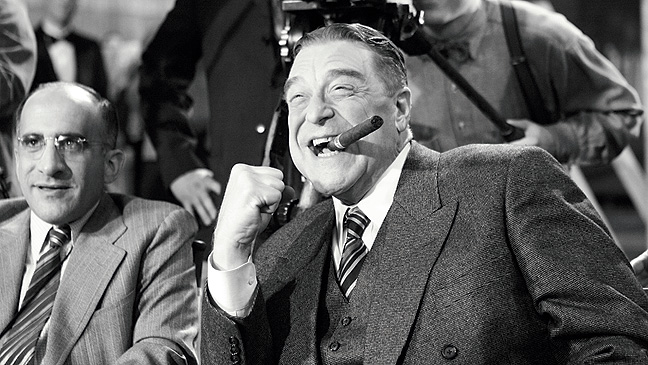And now, I conclude my incessant takeover of your Social Media newsfeeds with my very last blog post of awards season. As predicted, “The Artist” took home the top prize and a few more. Most surprisingly, Meryl Streep beat out Viola Davis for Best Actress, because apparently people were outraged that she only won two. Most disappointingly, George Clooney lost Best Actor to Jean Dujardin. I have respect for Mr. Dujardin and he gave a great performance, but his transformation was nothing like Clooney’s.
For now, Clooney will just have to live with the fact that he’s George Clooney.
The Oscars can be called many things: lavish, glorious, and a waste of time and money. It would be great if it could be called entertaining, hasty, and innovative instead. To be fair to Billy Crystal, he is not the world’s worst host, but a very safe choice. However, he has already stirred up some controversy for putting on black face in order to play Sammy Davis Jr. during the show’s introduction. The highlight though was when he tried to read people’s thoughts. It was a simple idea that was pulled off with perfect execution.
Like the host, this year’s ceremony certainly wasn’t terrible. It was something that could be considered even worse than terrible: it was meh. Nothing very memorable happened, and many of the winners and nominees will not stand the test of time. How is it that both “50/50″ and “Young Adult” were totally shut out? How is it that “War Horse” walked home empty handed? The real Oscar winners are the ones that stand the test of time, and I have a feeling that some years down the road, “The Artist” will feel artificial. This is not to say that I didn’t like “The Artist,” as my review will show. I just feel that its achievements will seem less impressive in the future. It will just be another silent movie. A very entertaining one at that, and one that manages to fall apart towards its ending.
Should we stop valuing movies just because they win awards? Probably. Awards don’t mean everything, especially when they are only voted on by a small group of old white men who probably ask their grandchildren if they should open every email in their spam folders. However, no matter how little the Oscars mean, I will never stop watching them. They unite everyone, from all walks of life, to come together and root for movies that they may or may not have seen. If they tune in, they could actually learn something. The most moving part of tonight’s ceremony for me was the Best Editing category, in which each editor got to speak about the methods behind their madness. If the Oscars want to win everyone back, this is what they should be like: less of a night of politically driven competition, and more of a night of film education and enlightenment. With a good host. I vote for Zach Galifianakis.
Three More Things:
1) After last year’s Oscars, I declared Natalie Portman as my future wife. Now, that honor will have to go to Emma Stone.
2) Next time I watch “Community,” I will smile, knowing that Dean Pelton is an Oscar winner.
3) For anyone who tried out my Oscars Drinking Game, I hope you are still alive.
It is also important to know that the guy in this image is the cinematographer of “Hugo”:
 |
| Thank you as always to FilmDrunk, the source of just about every funny image I get. |






